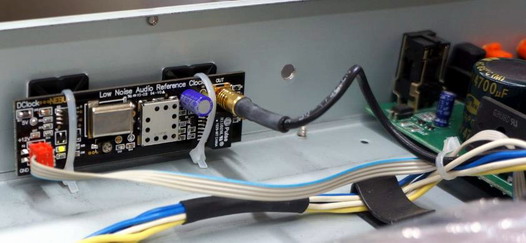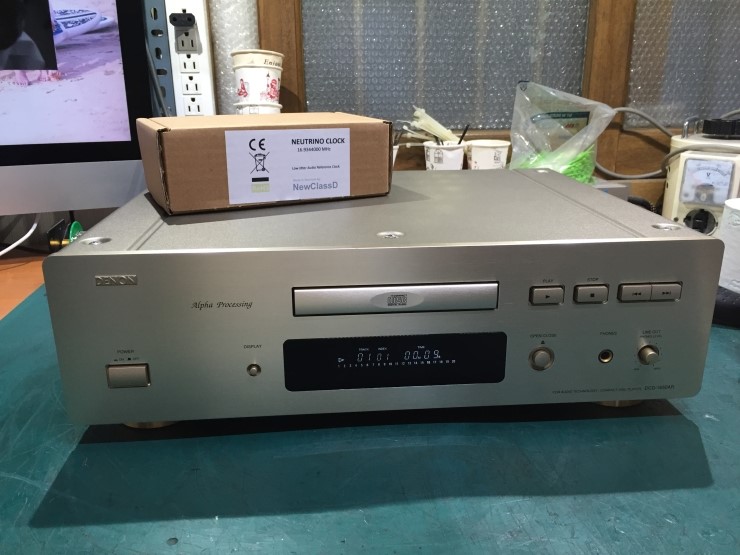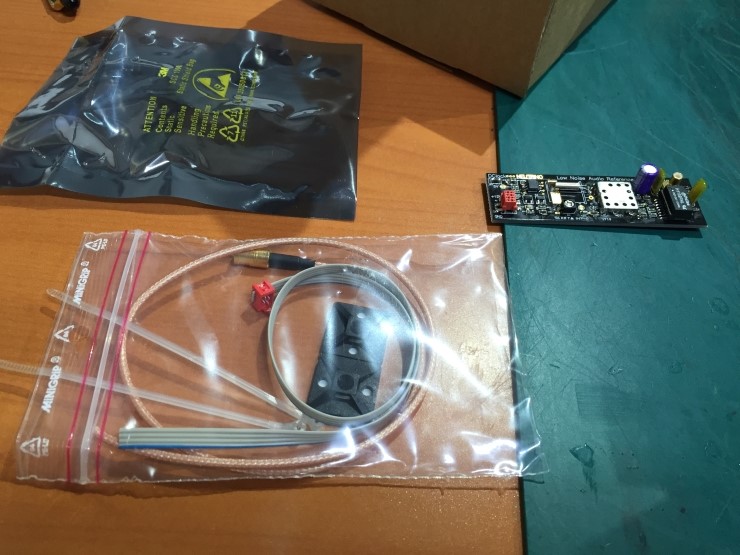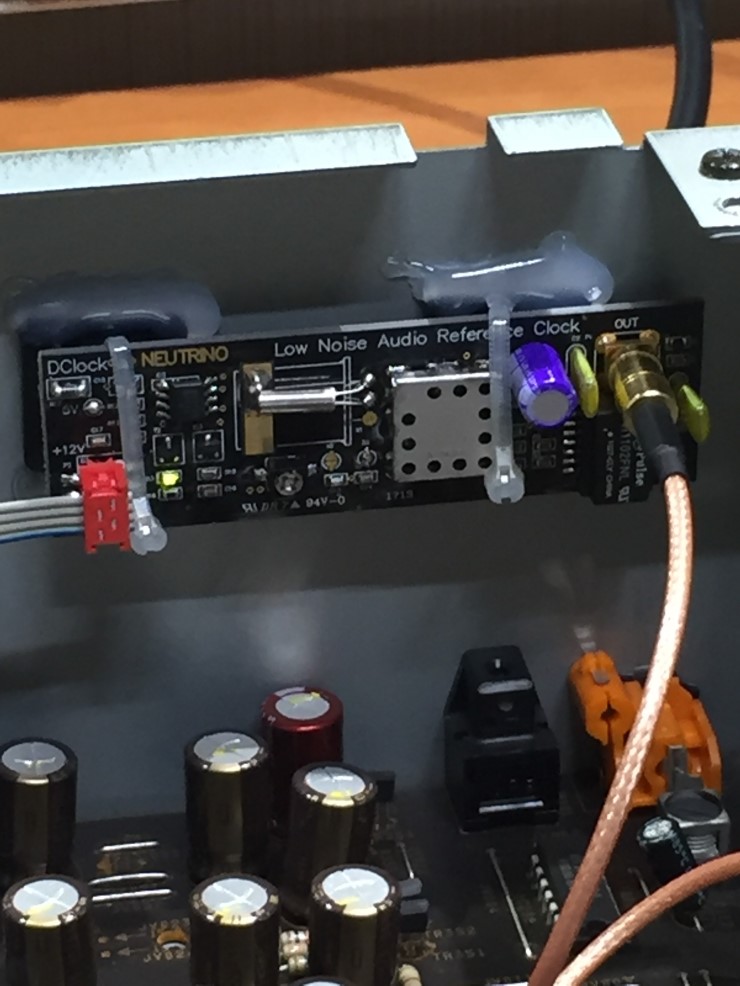제조사 L C Audio, Denmark
[ L Clock 이란? ]
CDP내의 Master Clock은 심장과도 같은 중요한 역활을 한다. 따라서
기존 CDP의 Jitter를 발생시키는 Clock을 고정도(高精度)의 Master
Clock인 L Clock 로 교체하면 음질이 크게 향상 시킬 수 있다.
Clock 로 교체하면 음질이 크게 향상 시킬 수 있다.
- 더 단단해지고 분명한 저역
- 더 넓고 깊고 높은 Soundstage
- 대 편성곡등의 경우 각 악기간의 경계선 및 위치 명확
- 분명하고 섬세한 고역, 자극적인 음이 사라진다 등이다
(고급 A) D-Clock Neutrino 238.000원+장착80.000원=318.000원
(고급 B) Neutron Star Audio Clock 559.000원+장착80.000원=639.000원
부산 KS Audio A/S센터 010-2929-8432
---------------------------------------------------------------------------------------------------------------------------------------------------------
Upgrading potential for CD / DVD players and Network players
A reference Clock is installed inside an audio player, and will have the effect of cleaning up the sound stage. This means the sound stage will spread out correctly, and make it easy for you to feel where the instruments and artists are placed. It essentially turns music from background noise to a living experience. Most CD / DVD and network players are equipped with a noisy clock from factory, running on the same power rail as the rest of the electronics. This will give a narrow and blurry soundstage. Kind of like if the whole band in your music were standing inside a phonebooth, and you were trying to listen outside. You cannot pinpoint if the drums are in front or back.
So there is potential for improvement. A reference clock is step #1 in upgrading a CD / DVD or Network player, to reach clean and live sound, which will let you really enjoy the music instead of turning it down.
A clock and a few other upgrades will turn any CD player sounding like a true high end CD player. And the same applies to DVD and Network players. An upgrade like this, is by far the cheapest way to achieve true high end sound. Each Neutrino clock is maticously adjusted to the correct frequency, within a few Hz.
Available in Frequencies of:
6.000000 MHz
8.467200 MHz
11.289600 MHz
12.000000 MHz
12.288000 MHz
16.934400 MHz
22.579200 MHz
24.576000 MHz
27.000000 MHz
33.868800 MHz
45.158400 MHz
54.000000 MHz
Should you wish any other frequency, please don't hesitate to contact us.
Specifications:
 Accuracy at 25 deg C: +/- 1ppm
Accuracy at 25 deg C: +/- 1ppm Accuracy from 20 to 50 deg C: +1/-5 ppm
Accuracy from 20 to 50 deg C: +1/-5 ppm Jitter: 1.0pS RMS
Jitter: 1.0pS RMS Frequency Deviation(8-24V): Max 1Hz
Frequency Deviation(8-24V): Max 1Hz Power Supply Requirements: 9.00 - 24.00 Volts DC 20 mA
Power Supply Requirements: 9.00 - 24.00 Volts DC 20 mA Size: 24*77(mm)
Size: 24*77(mm)
New type of Voltage Regulator.
In our previous regulators we have used the LM329, one of the best voltage references, when it comes to low frequency noise. However LM329 requires at least 8V to function, including the current mirror. This is fine for most installations, but from time to time, a lower voltage can be beneficial, and make the regulator less sensitive to ripple noise.
So this time we were looking for a reference with lower base voltage, but the same exceptional noise performance, and we found it in a green LED. The LED has very good noise performance, in the lower corners of the frequency spectrum, where capacitor decoupling will not do any good.
The resulting noise of this voltage regulator, is as good as the LM329 based regulators, but with fewer components, and smaller footprint.
While an LED is an optimal choice when it comes to noise, it has less temperature stability, and a relatively high dynamic impedance, compared to a real reference, making in less capable of blocking input noise. So we had to think out a circuit where these shortcomings would not become the bottleneck for overall performance.
The LED will decrease it's standoff voltage by about 2mV per deg K, causing the reference voltage to drift with temperature. To counteract this drift we paired the LED up with another component with the opposite temperature coefficient.
The result is only a small drift over the entire temperature range. (See red curve below).

Frequency stability.
One of the differences between Neutron Star and Neutrino is the latter has no 'Crystal Oven' keeping the crystal and oscillator at a constant temperature.
The Neutron Star clock will stay stable over the entire temperature range, because it keeps the critical circuits heated to a constant temperature of about 40 degrees C. Neutrino doesn't have this feature, which is one of the reasons for the lower price tag. However as you see, it's still pretty stable, and keeping within about 70 Hz (for a 16.9344 MHz clock - see blue curve above), over the temperature range. This is a deviation of only 4 ppm.
The spec for a standard CD player clock is 50ppm, which is equal to a deviation of 800 Hz. So the Neutrino is still 10-12 times better than the standard clock, on frequency stability. You can argue if this parameter has any impact on the sound, as the frequency only effects the playback speed in a very very small amount.
What is more important for the sound is to maintain low jitter, or time deviation noise. On this parameter the Neutrino excels over a standard clock, and even meets all parameters of some of the best clocks available, such as D-Clock. Neutrino using a new innovative setup of modern components, is actually a little cheaper than D-Clock, one of the reasons is the smaller PCB real estate.
Low Noise Colpitts Oscillator.
The Neutrino Clock uses a Colpitts oscillator, famous for low noise, and usually found in sensitive receiver equipment. This type of oscillator does not transfer power rail noise to the clock phase, as does a standard oscillator based on the simpler and more noisy Pierce type 'inverter' oscillator.
3.3V / 5V setting.
Onboard is a voltage setting, to make the Neutrino compatible with any 3.3V or 5V host circuit. Simply apply solder to the bubble marked '5V' (found just next to the red power connector) to set the voltage regulator at 5V, otherwise it's 3.3V. This volatge refers to the - approximate - amplitude of the clock signal (Vpp), that comes out of the clock connector.
There is no 'host VCC' mode as found on Neutron Star, mostly because it is almost never required. This function was used to turn the clock off, in cases where the host VCC was turned off, (standby mode), while there is still power on the clock circuit.
Transformer isolated injection point.
Many clocks have a direct connected clock output, with reference to GND. While this might seem like an obvious solution, there is a problem. Either you are bound to make a double connection loop, when you connect GND of you clock output and GND of the power supply to the clock, and these two points are already connected through a different path in the circuit board, possibly with some noise sources along the way. OR the power supply GND return current will be fed to, and inject noise into the clock GND point. Slightly less harmful, but none of these is really good. Some solution needed to be found, therefore we came up with the isolated clock injection point. This means the power supply GND and clock signal GND are isolated from each other up to 1500V DC. This way power supply noise is kept in the power supply, and not transferred to the clock signal.
Neutrino is equipped with this transformer isolator, this is how it's done:

 | The actual transformers are tiny toriod's, inside an SMD package. |
You may notice the diode connected across the output of Neutrino clock, this diode is required when replacing a 4 pin CMOS crystal oscillator with the Neutrino clock. The CMOS oscillator output signal is 0 - 5V, and the diode displaces the Neutrino's clock to approximately 0 - 5V. With earlier D-Clock's you had to mount this diode yourself [like this], but obviously - no longer necessary. 
사이즈가 작고 설치용적을 줄이기 위해 고정홀이 없습니다. 그림과 같이 케이블타이를 사용하거나 다른 부품과 함께 고정시키는 방법을 사용하시기 바랍니다.




























